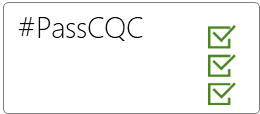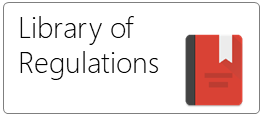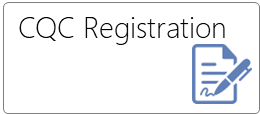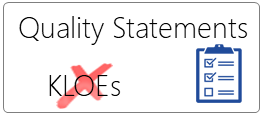Timetable for change
| OLD |
NEW |
|
| Initial Roll out | August 2022 | - |
| Online Provider portal | September 2022 | March 2024 |
| Pilots for new assessments | October 2022 | Autumn 2023 |
| KLOEs scrapped | January 2023 | October 2023 |
| Full Roll out | January 2023 | January 2024 |
Quality Statements replace KLOEs
This is a ground up redesign starting from the bare bone Domain Headings of Safe, Caring, Responsive, Effective, and Well-Led.
- The Key Domains have new definitions
- Each Domain has 5-8 Quality Statements (34 in total)
- Evidence will be gathered in 6 pre-defined categories
[Note that KLOEs are scrapped in their entirety]
Transition from old to new
There has been no "transitional arrangement". the new Quality Statements are now in place..
New ratings methodology
Each Quality Statement will be assessed based on 6 predefined evidence categories
- People's experience of health and care services
- Feedback from staff and leaders
- Feedback from partners
- Observation
- Processes
- Outcomes
This will provide a structured assessment system, injecting some level of consistency where none existed before.
Providers will also be able to pinpoint exactly how they fared in each area.
Evidence - What's New?
Look at the Evidence Categories carefully. You cannot prepare for any of these at the last minute
This is why:-
- Most categories are about gathering external evidence from stakeholders
- Only TWO are about evidence that you can provide (Observation and Processes)
- ALL are about looking at historic actions, events, and outcomes
Inspections have always been about historic compliance. If you haven’t been doing this throughout the year, you’re in difficulties.
All you can do at the last minute is gather your documents, you can't invent evidence
Evidence, Ratings, and Continuous monitoring
External evidence will be gathered on an ongoing basis, and your ratings can change at any time if this shows a change in risk.
What evidence is relevant and how assessments will be made will be tailored to different types of providers and services. The evidence will be scored, and this scoring used to determine the overall rating.
The overall emphasis is on continuous monitoring. The key takeaway for Providers is to ensure they have processes that also record evidence of daily compliance so that they are ready for inspections at any time.
The most positive takeaway is that ratings can be changed at any time: so a negative rating isn't that drastic. A Provider will have ample opportunity to fix things and get the ratings revised.
Policies Vs Processes
Processes have a new and separate heading; Policies are hardly mentioned.
A new focus on Processes. The CQC will be look for actual processes and activities, and not your impressive library of policies.
Their definition:
“Processes are the series of steps, or activities that are carried out to deliver care that is safe and meets people’s needs.
Our assessment focuses on how effective policies and procedures are. We will look at information from the provider and data sources that measure processes”
Note the wording "how effective" policies are, not that you "have appropriate" policies.
Their examples include clinical data, waiting times, care records etc. but not policies.




